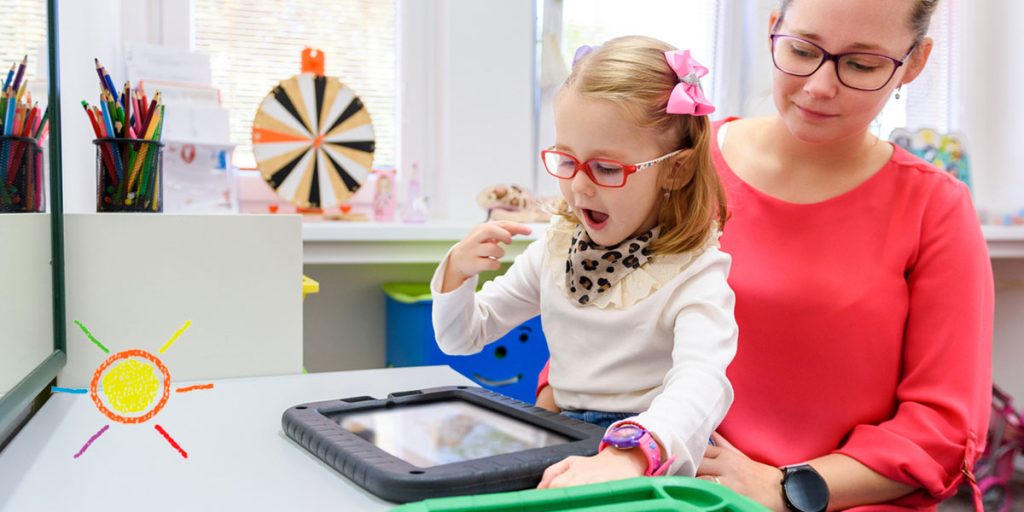Autism, or the autism spectrum disorder, is a condition that is usually diagnosed early in a child’s life and continues throughout childhood and adulthood. It is a neuro-developmental condition with a cause that is not easy to pinpoint, with factors including genetics, infections, and chemical exposure. In simpler, broader terms, autism is caused by radically different wiring in a child’s brain.
The result can be extremely varied, hence the autism spectrum. Symptoms and overall severity ranges from mild to very severe, with some children requiring full-time care, while others can learn to be independent over time, with the proper intervention and right tools. In the past, autism was split into different diagnoses, including Asperger’s syndrome. However, over the years, researchers have come to understand that symptoms and conditions are far too varied for individuals to fit into specific diagnoses, and thus, the spectrum was born.
For many parents, communicating with a child on the spectrum can be very difficult. While autism expresses itself very differently from case to case, many children have a hard time communicating effectively, or at all. This can lead to much frustration and disappointment as requests and wishes would go unheard, and parents feel inadequate and lost. To better connect with your child, you have to start at the beginning.
Learn More About ASD
Autism affects roughly one in 59 children in the US alone, according to the CDC. While autism exists on a spectrum, it can be broadly defined as a developmental condition. Autism is not the same as an intellectual disability or a learning disability. However, children on the spectrum may struggle with multiple different conditions, including other disabilities.
Unlike a learning disability (like dyslexia) or an intellectual disability, autism is best defined by how a child struggles to interact with its environment.
Children on the spectrum often have trouble with social interactions, subtle cues, complex or abstract thinking (including problem solving and planning), sensory problems (feeling discomfort at a sound, smell, or even sight), and physical medical issues that are more common among children with autism, including GI disorders and epilepsy.
A child’s ability to think, learn, and interact may be extremely poor, but it could also be very advanced. Children on the spectrum are sometimes referred to as ‘low-functioning’ or ‘high-functioning’, but a more apt description would be to explain that children sometimes show low or high functioning in various markers of autism, and that, based roughly on the severity of their condition, they may develop extraordinary skills in some aspects, or struggle more than their peers in others.
Above all, caring for a child with ASD requires patience. It’s a tough condition to live with, and children with autism can feel the pressure around them, even if they don’t outwardly show it – more so than their peers, they experience symptoms of anxiety and depression, often at least partially as a result of their condition and the stigma it carries.
Work with an Applied Behavior Analyst
In any case of autism, it should be a given to work with a professional and start interventions and treatment early on. With proper care, a young child with autism can learn to overcome difficulties and challenges that would otherwise cement themselves and become harder to deal with in the future. Applied behavior analysis is a common form of therapy used to treat children and adults on the spectrum, specifically targeting ‘unwanted’ behaviors and helping children and adults change these behaviors over time.
It’s important to work with an applied behavior analyst, because the work they do does not always translate into all aspects of a patient’s life. Even as they make progress together, a child with autism may not immediately understand that what they’re learning to do at therapy is a rule that should also be followed at home, or at school.
By coordinating with a specialist and your child’s school and teachers, you can ensure that the positive lessons they are learning are being constantly and consistently reinforced, with a better chance of sticking in the long-term.
Don’t Expect Enthusiastic Reactions
One of the things parents may have a hard time getting used to is the lack of enthusiasm or indication of joy on a child’s face in certain situations. While it’s a common myth that people on the spectrum cannot experience emotions, or are less emotional, it’s just that: a myth. Rather than being less emotional, children on the spectrum can sometimes be less emotive.
Others can be very emotive indeed, regularly lashing out and having problems with aggression, and how to channel it. But in some cases, children may experience joy but describe it only in a flat voice, with no facial indication of happiness. This does not mean they are being sarcastic or unenthused, but they simply may not show it. It helps to ask your child to tell you how they feel, if you are unsure.
Be Particular with Your Language
Metaphors and sarcastic humor may be initially lost on your child, even as they grow older. Some kids do develop an understanding for certain idioms and grasp humorous concepts such as irony, sarcasm, and comedic timing, but others require much more straightforward language. Avoid using terms that might confuse your child when communicating and keep things simple.
Watch Carefully for their Interests
It can be very difficult to connect with a child that does not communicate very well, but straight one-on-one communication is only one of many ways to connect with a person. Another would be through play, which is particularly effective in children. The key, however, is to find out what your child likes to do. Keep a careful watch on what interests them the most and make a point of becoming invested in that as well.
Some parents try to get their autistic children interested in their own hobbies, which may or may not work. However, when your child develops a hobby far removed from any of your own, you should do your best to learn more about it and foster their interest. Not only can it be a great way for them to simply have fun and be a kid, but children learn best through interests, and knowing what your child likes can be a great help later on, as they are learning different concepts, and their hobbies can become vehicles for them to better understand the world around them.
Introduce Changes Slowly & Be Patient
Patience is very important when connecting with a child on the spectrum. Changes cannot be introduced quickly, and any sudden change to a child’s routine or schedule can and will be met with resistance, and at times, frustration. However, that doesn’t mean parents should let their routines stagnate.
While it’s okay to take things at your child’s pace, it is your job to push them to learn new things and explore their boundaries, more so than they otherwise would. It is normal for children to yearn to grow and constantly exercise curiosity, but these traits may be difficult for some children on the spectrum.


